Emlaghroyin
Houses within 15km of this house
Displaying 95 houses.
Houses within 15km of Emlaghroyin
Displaying 95 houses.
| House name | Description | |
|---|---|---|
| Mote Park | The home of the Crofton family from the 17th century, valued at £140 in 1906. ''Saunders Newsletter'' dated 17 May 1865 refers to a fire at Mote Park which badly burnt the house. The house was demolished in the 1960s. Roscommon Golf Club occupies part of the original Mote Park demesne. |

|
| Cappagh | Occupied by Dillon Hughes at the time of Griffith's Valuation, when it was valued at £11 10s. He was leasing the property from Alexander Beatty. The National Inventory of Architectural Heritage suggests that this is originally a seventeenth century house with later additions. It is still extant and well-maintained. |

|
| Newforest | Built prior to 1777, Wilson refers to it as the seat of Mr. D'Arcy in 1786. It was held in fee by Richard D'Arcy at the time of Griffith's Valuation when it was valued at £24. It was demolished in the latter half of the 20th century. |
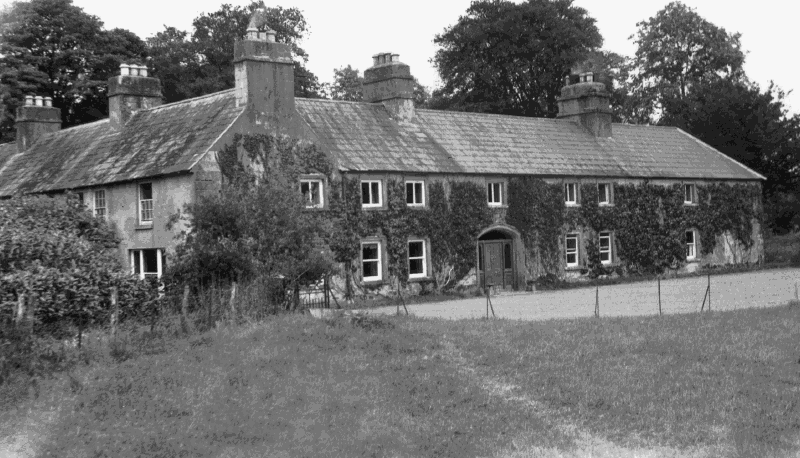
|
| Wellfort | Marked on the first edition Ordnance Survey map as Wilfort House, this property was held in fee by Richard D'Arcy at the time of Griffith's Valuation when it was valued at £18. It is named as Wellfort House on the 25-inch Ordnance Survey map of the 1890s. Wellfort is no longer extant. |
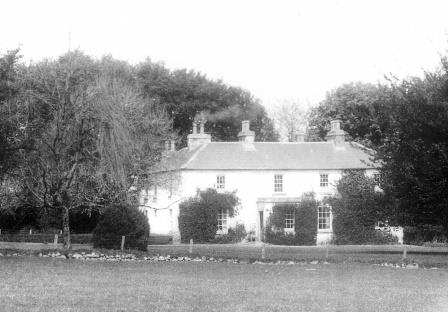
|
| Kentstown | The sales rental of June 1851 records the leasing of Kentstown, by Netterville and Geoffrey Davies, to Thomas Davies, for 31 years from 10 July 1838. It was held in fee by him at the time of Griffith's Valuation when it was valued at £12. In the 1877 sales rental the house was described as having "a parlour, drawing room, 6 bedrooms, kichen, dairy and servants' hall". A house is still extant at the site. | |
| Durrow | In 1786 Wilson refers to "Durra" as a seat of Mr. Bagot. At the time of Griffith's Valuation, Francis Hurley was leasing a property valued at £7 together with over 100 acres, from the Bagot estate at Durrow, barony of Ballymoe. A house is still extant at the site. |
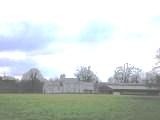
|
| The Hermitage | The original house, named Hamlet Cottage, was beside the road and is marked on the 1838 Ordnance Survey map. A new house was later built and is labelled The Hermitage on the 25-inch Ordnance Map of the 1890s. A house is still extant at the site. |
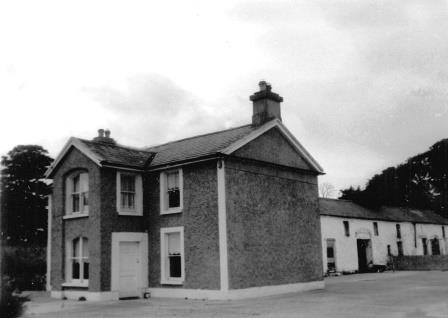
|
| Roseberry House | Described as 'an excellent two story slated house' in 1850. At the time of Griffith's Valuation it was held in fee by William Bodkin and valued at £15. This house is no longer extant. | |
| Springfield House | 18th century two-storey thatched house, described in 1863 as a house of ancient construction, still occuppied by the McDermott family in the early 20th century. At the time of Griffith's Valuation, it was occupied by Owen McDermott who was leasing from William McDermott and Glasgow Connolly and was valued at almost £12.. Portion of the house is still extant. |
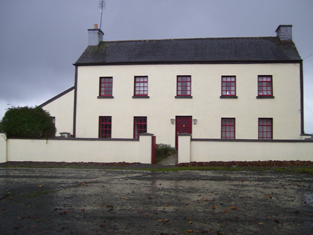
|
| Gorteen | The residence of Patrick O'Beirne by 1837 and of Anne O'Beirne at the time of Griffith's Valuation, who held the house from Patrick Grehan. It was valued at £8. The original house is no longer extant. | |
| Clooncah | A house built after the publication of the 1st Ordnance Survey map, at the time of Griffith's Valuation it was by John Love. The house was valued at £12 and held from John Armstrong. In 1885 Walford describes John Armstrong as a magistrate for county Galway, and of "Clooncagh and South Hill, Clifden". The site at Clooncah is now occupied by farm buildings. | |
| Turlough House (Ballymoe) | Held in fee by John Cheevers at the time of Griffith's Valuation when the buildings were valued at £7 10s. Occupied by John J. Cheevers in the early 20th century. This house is no longer extant | |
| Glinsk House | In 1786 Wilson refers to Glinsk as the "seat of the late Sir John Burke" and also as the seat of Sir Rickby Burke. Glinsk Castle and a substanial house are both marked on the 1838 Ordnance Survey map. The castle is shown on the 25-inch map of the 1890s but there is no trace of the house. At the time of Griffith's Valuation, Allen Pollok held buildings valued at £1 15 at the site, recorded as a herd's house. | |
| Kedagh Park | Held by Bartholomew Kelly in fee at the time of Griffith's Valuation when it was valued at £11 10s. The house is labelled Kedagh Park on the First Edition Ordnance Survey map but as Clondoyle House on the 25-inch map of the 1890s. A house still exists at the site. | |
| Cloondoyle | In 1786, Wilson refers to "Clondowel" as the seat of Mr. Blake. At the time of Griffith's Valuation it was occupied by Thomas Kelly and held from [his father] Bartholomew Kelly. The house was valued at £8. It is labelled Clondoyle House on both the First and 25-inch editions of the Ordnance Survey map. A house still exists at the site. |
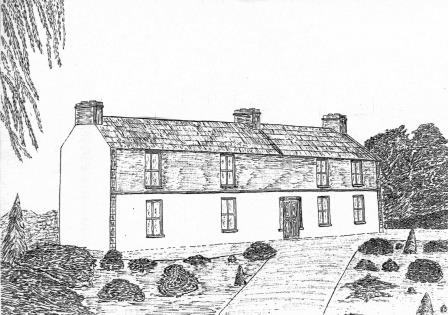
|
| Ashfield | At the time of Griffith's Valuation held by John Kelly in fee when the house was valued at £8. A building still exists at the site. | |
| Fairfield | Valued at £18 and held in fee by Pollok at the time of Griffith's Valuation. It is no longer extant. | |
| Millford | Allen Pollok held a steward's house and offices valued at £16 at Millford at the time of Griffith's Valuation. Extensive buildings remain at the site. | |
| Skehaghard | Built by Allen Dowell circa 1840. Occupied by Edward Dowell at the time of Griffith's Valuation when it was valued at £32. Advertised for sale in 1855 and bought by Alan Pollock. A lithograph and long description of the house are included in the sale rental. It was the home of Pollock's steward, George Lowe, for a time and leased to Martin J. McDonnell from 1883-1912. Taken over by the Congested Districts Board in 1918, the house was demolished in 1919. |
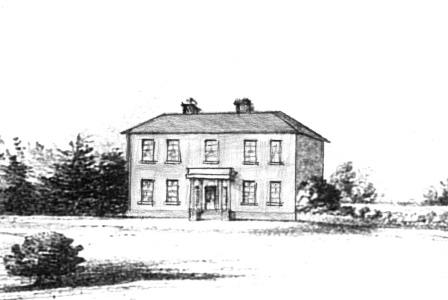
|
| Curraghbog | Leased by Allen Pollok to Michael Kelly in the mid 1850s when it was valued at £7. A house is still extant at the site. | |
| Newtown | John Burke, a gentleman, was living at Newtown in 1749. Valued at £4 in the mid 1850s. The property seems to have disappeared by the time of the 25-inch Ordnance map of the 1890s. | |
| Mount Kelly | A Kelly property in the mid 18th century, which passed to a branch of the Bellew family through marriage. The original house was known as Drum House but was in ruins by the 1820s. Mount Kelly was owned by John William Browne at the time of Griffith's Valuation. The 19th century house appears as Lakeview.on the 1st edition Ordnance Survey map but as Mount Kelly on the 25-inch edition of the 1890s. A house still exists at the site. |
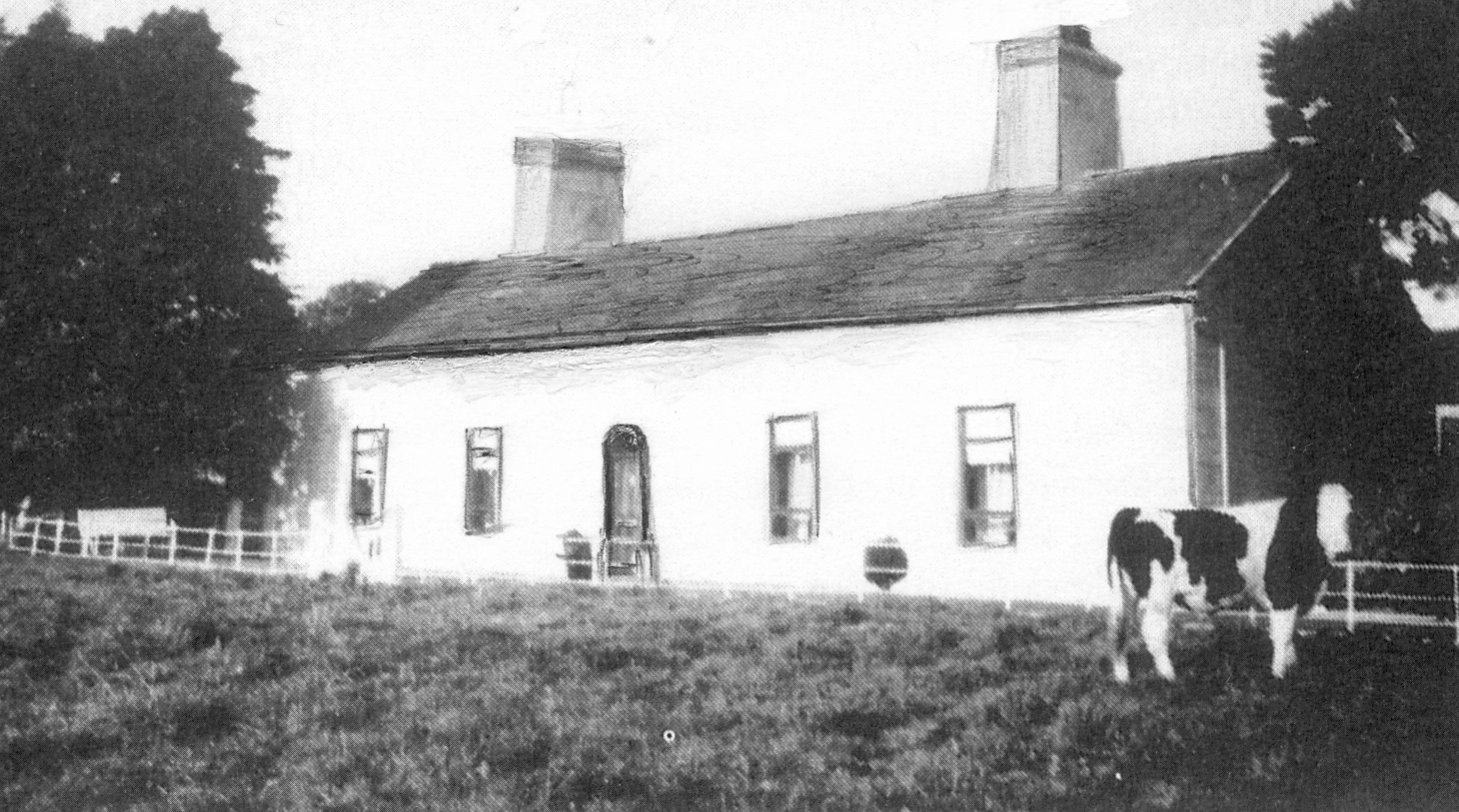
|
| Aghrane Castle/Castle Kelly | A 16th century tower house with 19th century additions. Castle-Kelly is recorded by Wilson as the seat of Denis Kelly in 1786. Lithographs of the entrance to Castle Kelly, Castle Kelly and Ballygar town are included in the sales rental of 1863. It was bought by the Bagots, sold by them to the Department of Agriculture in 1910 and demolished in 1919. Parts of the demesne are now owned by Coillte, the Forestry Service. |
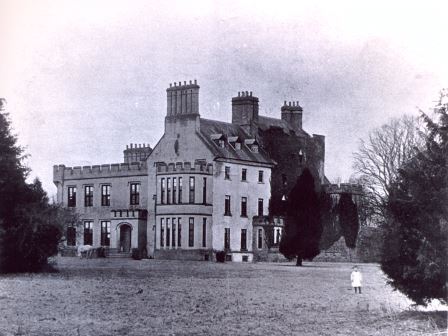
|
| Thornfield | Occupied by John Mahon at the time of Griffith's Valuation and held from the Kellys. The sales rental of 1863 includes a lithograph of Thornfield which was sold privately to Christopher Bagot. It continued to be occupied by the Mahon family until 1917, when it was taken over by the Land Commission, Henry English inhabited the house until the 1950s. This house on the Galway/Roscommon border now appears to be a ruin, with a substantial garden wall still intact. |

|
| Rookwood | The house, located on the border between counties Galway and Roscommon, was built in the late 1720s by a branch of the Ormsby family of Tobervaddy. Jane Ormsby married Robert Waller. Both Wilson and Taylor and Skinner record that Rookwood was occupied by Major Waller in the 1780s. The house was later leased by the Thewles family. Edmund Kelly purchased the lease of Rookwood from his cousin, James Thewles, in 1800. The house was occupied by the Taaffes in the early 19th century and by the Kellys from the 1830s. In 1900 Dr Charles E. Crean of Ballyhaunis bought Rookwood and sold it to the Land Commission in 1922. The house was intermittently occupied until the 1940s and gradually became derelict. |

|
| St Brendans | Occupied by the Honourable Thomas ffrench from the 1830s to 1850s who held the house from the Honourable Martin ffrench. It is now almost ruinous. |
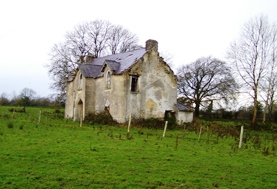
|
| Dunamon | A tower house with 18th and 19th century additions, In 1786 Wilson refers to Dunamon, the seat of Mr. Caulfeild, as "a fine old castle". Occupied by John Shiel, leasing from the Caulfeild estate at the time of Griffith's Valution, when it was valued at £35. In 1894 Slater refers to it as a residence of St.Geroge Francis Caulfeild. Bought by the Divine Word Missionaries from the Land Commission in 1939 and now in use as a care centre. |

|
| Corra More | The residence of Colonel W. Caulfield in 1814. The home of Christopher Balfe, ninth son of Walter Balfe of Heathfield, in the 1830s. John Cornwall occupied the house in the mid 1850s when the house was valued at £23. Extensive high walls as well as the yard remain but the present owners live in a modern bungalow. |

|
| Mount Talbot | Built circa 1750, Mount Talbot is recorded by Wilson as "the fine seat of William J. Talbot" in 1786. It was enlarged by William Talbot in the 1820s. The house was valued at £70 at the time of Griffith's Valuation. A nursery business operated in the gardens in the 1890s. Burnt in 1922 and now a ruin. |

|
| Carrowroe Park | The home of the Goff family in the 19th century. Described by Lewis as a substantial and handsome mansion of limestone with a Doric portico, the residence of R. Goff. In the 1850s occupied by the Reverend William Battersby, who held the property from the Earl of Essex. Reverend Battersby was married to Mary Maud Caulfield, a daughter of John Caulfield, Archdeacon of Kilmore. The house was valued at £65. By the 1870s the residence of John Burke and the seat of Lt-Col. Michael A. Burke in 1894. Still extant and offered for sale in 2008 (Irish Times, 5 June 2008). |

|
| Rocksavage | The home of Waldrons and Ormsbys in the 18th century.In 1786 Wilson refers to it as the seat of Mr. Waldron. The residence of Jeffrey French in 1814 and occupied by Mr Smith at the time of the first Ordnance survey and by Samuel Hodson who held it from William Longfield in the 1850s. Occupied by Robert O. Longfield in 1906. A modern house now occupies the site but some old farm buildings still remain. |

|
| Keenagh | Described at the time of Griffith's Valuation as a steward's house, held in fee by Percy Magan and valued at £4.10. The ruins of the building still exist at the site. |

|
| Castlecoote | An 18th century house which has recently been restored. Occupied by T. and J. Nolan in 1814 and by William John McLoughlin in the 1850s, when the house was valued at £40. In 1894 it was the seat of Arthur and Francis Chute. See www.castlecootehouse.com. |

|
| Emlaghkeadew | At the time of Griffith's Valuation this house was ccupied by Louis Ormsby when it was valued at almost £10. It is no longer extant and a modern house exists at the site now. | |
| Castlestrange | Named after the L'Estrange family who held the land and castle in the late 16th century, Castlestrange appears to have belonged to the Gunning family early in the 18th century. A house was built by the Mitchell family in the 18th century which at the time of Griffith's Valuation was valued at £47. In 1894 the residence of James Mulry and occupied by Thomas Mulry in 1906. The original house, coach house and stables are now in ruins but other outbuildings have been converted into a home. |

|
| Coolmeen | Referred to as a herd' s house at the time of Griffith's Valuation when it was occupied by William Harrison who held it from Patrick Curtis. The house now extant at the site is not the original one. |

|
| Mount Prospect | This house was the residence of John Browne in 1814. Recorded as the seat of Mr Fallon at the time of the first Ordnance Survey in the 1830s but in ruins by the mid 1850s. though a small portion of the house is labelled Mount Prospect on the 25-inch Ordnance Survey map of the 1890s. Small fragments of the building remain at the site. | |
| Bushy Park | Early 18th century house, used as a school for the sons of Protestant clergymen. Occupied by Andrew Lyster in 1814. The residence of James Barlow in the 1830s and in the mid 1850s. Bushy Park became the home of the ffrench family in the 1860s, who bought out the property in the early 20th century. Dr Noelle Davies, author and poet, was a 20th century member of the ffrench family. This house is now the home of Laurence and Helga Mullins. |

|
| Tobervaddy | The Ordnance Survey Field Name Books record the ruins of an old castle. The Discovery map mark a fortified house. A branch of the Ormsby family resided at Tobervaddy in the 18th century. and Wilson, writing in 1786 refers to Tobervaddy as the seat of Mr. Ormsby. Robert Irwin held the townland at the time of Griffith's Valuation. |

|
| Bellgrove House | Described in the Ordnance Survey Field Name Books as a small house with a demesne of 115 acres. Occupied in 1837 by O. Irwin and the residence of John C. Davis at the time of Griffith's Valuation. Demolished in the mid 20th century. | |
| Kilmore | A house at Kilmore was occupied by the Reverend William Thompson in 1814. Edward Corcoran and John Sadlier held Kilmore valued at £3 in fee at the time of Griffith's Valuation. Edward Kennedy owned the property in the 1870s. The house, which was located just inside the stone pillars, was demolished circa 2004. |

|
| Fort William/Fort Lyster | A house on the outskirts of the village of Athleague, it was the home of N. J. French in 1837. It was valued at £20 and was occupied by Henry West who held the property from Anne Lyster in the 1850s. The house, marked as Fort William on the first Ordnance Survey map, later became known as Fort Lyster. Still valued at £20 and occupied by the representatives of William Jameson in 1906. It was the home of Aileen Cust the first woman veterinary surgeon in the British Isles in the early 20th century. Modern farm buildings occupy the site but the entrance gates remain. |

|
| Fortwilliam (Castlereagh) | The estate of William W.R. Sandford was leasing the house at Ballyfinegan, barony of Castlereagh, to Patrick Tighe at the time of Griffith's Valuation when it was valued at £11. Lewis records a house called Fortwilliam in the parish of Ballintober as the seat of P. Teighe in 1837. The Census of Elphin recorded William Compton as resident at Ballyfinegan in 1749. There is still an extant house at the site. | |
| Frenchlawn | At the time of Griffith's Valuation, the estate of William W.R. Sandford was leasing a property valued at £12 at Frenchlawn, barony of Castlereagh, to James Glancey. In 1837 Lewis recorded Frenchlawn as the seat of Mrs. French. In 1814 it was the residence of Christopher French. There is still an occupied house at this site. |

|
| Willsgrove | William W.R. Sandford's estate was the lessor of two properties at Willsgrove, barony of Castlereagh, at the time of Griffith's Valuation. One, valued at £10, was vacant while the second was leased to Anne Glancey together with 260 acres. In 1837 Lewis records Willsgrove as the seat of W.R. Wills. In 1786, Wilson refers to Willsgrove as the seat of Thomas Wills, "a large and fine house". The 1749 Census of Elphin records that Godfrey Wills was resident at Willsgrove. In 1783 Taylor and Skinner note Willsgrove as a seat of the Wills family. It is described as "in ruins" on the 25-inch Ordnance Survey map of the 1890s. | |
| Bohagh Lodge | At the time of Griffith's Valuation, Robert Glancey was leasing a house valued at £6 and over 500 acres at Bohagh, barony of Castlereagh from Travers R. Blackley. | |
| Cleaboy House | Patrick Balfe was leasing a property valued at £10 from Teresa Madden at Cleaboy, barony of Castlereagh, at the time of Griffith's Valuation. A house is still extant at the site. | |
| Ballaghawbeg | Richard Irwin's estate owned a herd's house valued at £2 together with over 400 acres at Ballaghawbeg, barony of Castlereagh, at the time of Griffith's Valuation. The Census of Elphin in 1749 recorded that Charles O'Conor, farmer, held this property at the time. Some ruins exist at the site. | |
| Emlagh | Robert Irwin was leasing a property valued at £5 + 230 acres at Emlagh, barony of Castlerea, to Patrick Flynn, at the time of Griffith's Valuation. The Census of Elphin indicates that John Irwin resided there in 1749. Gormley states that the house was probably built around 1740 and extended in the early 1800s. By the 1880s the Irwins had sold Emlagh to Walter McDermott. The house was later demolished. | |
| Milltown | Roderick O'Conor/O'Connor occupied the property at Milltown, barony of Castlerea, valued at £36, at the time of Griffith's Valuation. It was also recorded as his seat in both 1814 and 1837. Gormley states that nothing of the house now remains save for traces of the mile long avenue. | |
| Heathfield | Patrick Balfe was leasing the property at Heathfield, valued at £36, to John Butler at the time of Griffith's Valuation. Lewis records Heathfield as the seat of Nicholas Balfe. It was also his seat in 1814. Gormley states that this house was originally known as Belgard Lodge and was part of the estate of Thomas Dillon of Belgard Castle, county Dublin. Richard Irwin of Fernhall acted as his agent in Roscommon. By 1830 the Heathfield estate was owned by Patrick Balfe and by the 1850s it was occupied by the Butler family, originally of Cherryfield, Elphin. They continued to occupy the house until the 1940s. The house is still extant. | |
| Longford Glebe | Longford House is best known as the birthplace, in 1860, of the first President of Ireland, Douglas Hyde. At the time of Griffith's Valuation it was leased by Rev. John Oldfield to William Cotton and was valued at £10. It is still extant and occupied as a private dwelling. |

|
| South Park | Patrick Balfe was occupying the residence valued at £45, at Southpark, barony of Castlereagh, at the time of Griffith's Valuation. In 1814 it was the seat of Michael Balfe who was also resident there in 1837. Gomley states that Daniel O'Connell was a frequent visitor to the house as his sister was married to one of the Balfe family. Slater refers to it as the seat of Major Michael Balfe in 1894. In 1783 Taylor and Skinner noted the property as the seat of Gen. Gisborne. In 1786 Wilson mentions South Park as "the fine seat of the late General Gisborne, now of Mr. Corr". Sadleir notes that Colonel Gisborne was MP for Lismore, in county Waterford in the 1770s and died in 1778. Skeffington Gibbon writes that South Park was built by General Gisburn on the Malone estate and was, in the late 1820s, in the possession of a grazier named Balfe. South Park House is no longer extant having been burned in 1921 but there are extensive remains of the walled garden and stable yard. |

|
| Willsbrook House | Originally a property of the Wills family who inherited the Sandford estate through Mrs. Mary Wills. In the 1850s Willsbrook was leased by Michael O'Connor. In 1814 it had been the seat of Daniel O'Connor. Willsbrook House is no longer extant. | |
| Cloverhill | Latouche esquire lived at Cloverhill in 1778 and Wilson refers to it as the seat of John La Touche in 1786. The residence of Thomas Hurst in 1814 and of John Hurst in 1837. Occupied by Edward Jones, who held from Thomas Booth, at the time of Griffith's Valuation. The main road has been directed through the site and only a few ruins remain. | |
| Laragh and Ross | The residence of Thomas Tighe in 1814. In 1830 held in fee by the Mahons of Cavetown. At the time of Griffith's Valuation occupied by Patrick Joseph O'Connor who held the house from Patrick O'Connor. Modern farm buildings occupy the site now. | |
| Fern Hall | At the time of the first Ordnance Survey the Trant family were recorded as the proprietors of the townland of Polranny, barony of Castlereagh, including Fern Hall House. Henry Dillon Trant was leasing it to John Irwin at the time of Griffith's Valuation when it was valued at almost £5. Gormley states that this branch of the Irwins was the oldest in the area, having been recorded there in the sixteenth century. The house was not in good repair by the end of the nineteenth century and no trace remains now. | |
| Brierfield | The Hawkes family built a chapel of ease at Brierfield in 1720. Brierfield was their main residence in the 18th and 19th centuries. Sold to Cox Cotton in the late 19th century, no longer extant. | |
| Tinny Park | Occupied by T.T. Byrne in 1837 and held in fee by Hugh Burns in the mid 1850s when it was valued at £11. It is still extant. It was offered for sale in 2016 and again in 2022. |
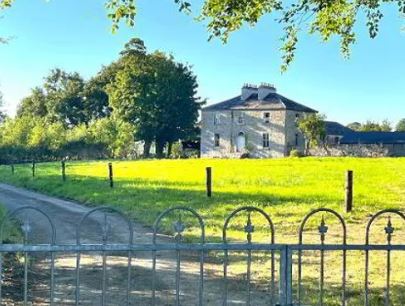
|
| Corrastoona More House | In 1749 Richard Kirwan was living at Coristoonamore. This house appears to have been the residence of K. Lyster [Kirwan Lyster?] in 1814 and of F.T. Byrne in 1837. Occupied by Patrick O'Connor in the mid 1850s, who held the house from Christopher Hamilton. Valued at £2 in 1906 and in the occupation of Sir N. O'Conor. It is no longer extant. | |
| Bopeep Lodge | A Blakeney property that was leased to H. French in the 1830s and to Robert French in the 1850s. |

|
| Dundermot | A Blakeney property, built circa 1750.Taylor and Skinner note is as occupied by Owens esquire in 1778. In 1786, Wilson refers to it as the seat of Samuel Owens Lee. It was the residence of Richard Kelly in 1814 and held by Patrick O'Connor at the time of Griffith's Valuation when the house was valued at £36. In the 1890s it became the home of the Blake-Kellys, although Nicholas O'Conor is recorded as the occupier in the valuation lists for 1906. Still extant and restored in the early 21st century. |

|
| Leabeg | Wilson refers to Leabeg as the seat of Mr. "Irvine" in 1786. The residence of Edward Irwin in 1814 and held by Daniel H. Irwin in fee at the time of Griffith's Valuation, when the house was valued at £6. It is described as "in ruins" on the 25-inch Ordnance Survey map of the 1890s. | |
| Ballymacurly | Andrew McDermott was farming at Ballymackeriley, parish of Cloonygormican in 1749. Occupied by Michael Nolan in 1837 and in the 1850s and held from Hugh O'Byrne. |

|
| Runnamoat | Runnamoat was occupied by Bryan Fallon in 1749 and noted by Wilson as a seat of the Fallons in 1786. It was the residence of James Fallon in 1814. Acquired by James Balfe, tenth son of Walter Balfe, the house passed by marriage to the Chichesters who leased it to Richard Kelly in the 1850s, when it was valued at £70. Occupied by Raleigh Chichester Constable in 1906. This house is sometimes referred to as Runnimead. Burnt in the 1920s. | |
| Newtown | Originally an Irwin property, bought by the Brownes in the 18th century. Held by the Very Reverend Henry M. Browne at the time of Griffith's Valuation and occupied by Henry Farmer. | |
| Rushfield House | Occupied by Patrick Shiel at the time of Griffith's Valuation .Labelled Rushfield House on the 25-inch Ordnance Survey map of the 1890s. There is still a house at the site. | |
| Kilbegnet House | Occupied by John Shiel at the time of Griffith's Valuation and valued at £25. The property is labelled Kilbegnet House on the 25-inch edition of the Ordnance Survey map. A house is still extant at the site. | |
| Temp House | A house called Tempe was occupied by Charles O'Connor in 1814. IN the 1850s it was leased by Tobias Kelly from Catherine Mennons and valued at £13. A house is still extant at the site. | |
| Church Park | Church Park was occupied by Benjamin Reeves in 1814. It is shown on the First edition Ordnance Survey map of the 1840s but is not labelled on the later 25-inch edition of the 1890s. The house is no longer extant but entrance gates are still visible. | |
| Holywell | Originally a Gunning home that passed to the Blakeneys by marriage. In 1786 Wilson mentions it as the seat of Charles Blakeney. Occupied by C. W. Blakeney in 1837 and by Henry Smyth in the 1850s who held the property from John Goodall. The property is no longer extant. | |
| Essex Lawn | Built after the First Ordnance Survey on part of the estate of the Earl of Essex, this house was occupied by John Kelly in the 1850s when it was valued at £18 10s. It is still extant. |

|
| Derrane House | The home of the Corr family in the 19th century, Henry Corr is recorded as living at "Durham" in 1814. Henry "Gorr" was residing in a property here valued at £12 at the time of Griffith's Valuation. It is recorded as "Derrane House [in ruins]" on the 25-inch Ordnance Survey map of the 1890s and very little trace remains of it now. | |
| Roxborough | Wilson, writing in 1786, refers to Roxborough as the seat of "Mr. Irvine". The residence of John Irwin in 1814 and of A. Brown in 1837. In the 1850s occupied by John Gaynor, when the house was valued at £20. The property is now a ruin. | |
| Lisbride | Occupied by John B. Purdon in 1814 and in 1822 by Arthur Browne. Patrick Duignan was resident at the time of Griffith's Valuation, when the house was valued at £12. A house still exists at the site. | |
| Hazelbrook | The residence of the Reverend Oliver Carey in 1814 and in the 1830s of Robert Blakeney. At the time of Griffith's Valuation occupied by Joseph A. Holmes and in 1906 by the representatives of John Neilan. Still extant but not occupied. | |
| Ballymartinbeg | At the time of Griffith's Valuation Jane Plunket held the house, offices and cornmill valued at £16 from the representatives of Gunning Plunket. Occupied by Martin McDonnell in 1906 and valued at £11. A house at the site has been recently renovated. |

|
| Englishtown (Ballygalda House) | A Mitchell family home from the mid 18th century. Occupied by William N. Reynolds at the time of Griffith's Valuation who held from George G. Battersby. The house was valued at £4.It is labelled Englishtown on the 1st edtion Ordnance Survey map but as Ballygalda House on the later 25-inch edition. A house and substantial farm are still extant at the site. | |
| Carrowmore | Carrowmore was occupied by John Davis at the time of Griffith's Valuation, when it was valued at £8 and leased from the Gunning estate. It is labelled Carrowmore House on the 25-inch Ordnance Survey map of the 1890s. A house still exists at the site. | |
| Mullymucks/Fortview | Built post 1838, though the National Inventory of Architectural Heritage suggests it is a modified 18th century house. Occupied by Francis Lyng in the 1850s, when it was valued at £24. It is still extant and now known as Fortview House. |

|
| Munsborough House | Built post 1838 and occupied by Edward Pearse in the 1850s, when it was valued at £20. Extensive buildings are shown at the site on the 25-inch edition Ordnance Survey map of the 1890s, labelled Munsborough House. A house and large farm are still extant at the site. | |
| Ballybride | James O'Farrell was leasing over 180 acre and a herd's house from Louisa Pelly at Ballybride, barony of Roscommon, at the time of Griffith's Valuation. | |
| Rockfield | Another Mitchell house in the townland of Castlestrange, occupied by D. Merry in 1837 and by David Wakefield in the 1850s. It is not shown on the 25-inch Ordnance Survey map of the 1890s. Rockfield was the home of Christopher and Mary Anne Irwin in 1749. | |
| Martinstown | In 1786 Wilson refers to Martin's-town as the seat of Mr. Davys. The residence of George Davis in 1814 and of Mr Davis in the 1830s, apparently held from the Digby family. By the time of Griffith's Valuation Ballymartinmore was in the possession of George Digby and a vacant house valued at £4 was held by Edward Flynn. The house is no longer extant. |

|
| Castleplunkett | Gormley states that the Plunketts built a mansion near Castleplunkett village sometime between 1655-1660. This building was later destroyed by fire in the mid-nineteenth century and the stones later used in building in the area. | |
| Brook Lodge | The Ordnance Survey Name Books refer to Brook Lodge in the south of this townland. The house is labelled Brook Lodge on the 1st edition Ordnance Survey map but seems to have disappeared by the time the 25-inch edition was published in the 1890s. Modern buildings occupy the site now. | |
| Marnellsgrove | The home of the Marnell family at the beginning of the 19th century. Richard Marnell was resident in 1814. | |
| Grange House | This house marked on the first Ordnance Survey map but not named would appear to have been the Ormsby's main residence in this townland. In 1786 Wilson refers to Grange as the seat of Gilbert Ormsby. It is labelled Grange House on the 25-inch Ordnance Survey map of the 1890s. The townland was part of the Farrell estate at the time of Griffith's Valuation. There is still a house extant at this site. | |
| Balydooley Lodge | John Hanley was leasing this property from St. George Caulfeild at the time of Griffith's Valuation, when it was valued at £5. It is still extant. | |
| Cloonlyon | In 1786 Wilson refers to Clonlyon, the seat of Mr. Kelly. The 1st edition Ordnance Survey map shows ruins in this townland. | |
| Ardmore (Dunamon) | In 1786 Wilson refers to Ardmore as the seat of Mr. Croaghan. By the 1830s an extensive demesne is shown in the area but no house is visible. The townland is in the possession of St. George Caulfield of Dunamon by the time of Griffith's Valuation. | |
| Ashpark | In 1786 Wilson refers to Ashpark as the seat of Matthew Lyster. By the time of Griffith's Valuation this townland was in the possession of Christopher Hamilton and the most substantial house, valued at £4, was leased from his estate by Patrick Finner. Very little of the buildings are visible on the 25-inch Ordnance Survey map of the 1890s though farm buildings still exist at the site. | |
| Oran (Ballymoe) | In 1778 the residence of R. Malone esquire is recorded at Oran. Wilson also refers to this property as the seat of Lord Sunderlin [Richard Malone]. This residence may have been in the townland of Cartron, | |
| Ballinturly | In 1786 Wilson refers to Ballinturly as the seat of Mr. Mitchell. By the time of Griffith's Valuation, this townland is part of the estate of Sir Charles Coote. John Brennan was leasing a house valued at almost £4 and 180 acres at the time. The buildings are not shown on the 25-inch Ordnance Survey map of the 1890s. | |
| Durham Lodge | Elizabeth Sandys advertised for sale "Durham Lodge" and 39 acres in July 1854. The Sandys house was valued at £3 in the 1850s and in 1906. This house was held in fee by William "Sands" at the time of Griffith's Valuation. It is not named on the 1st edition Ordnance Survey map but is shown as Durham Lodge on subsequent editions. A farm is still extant at the site. |

